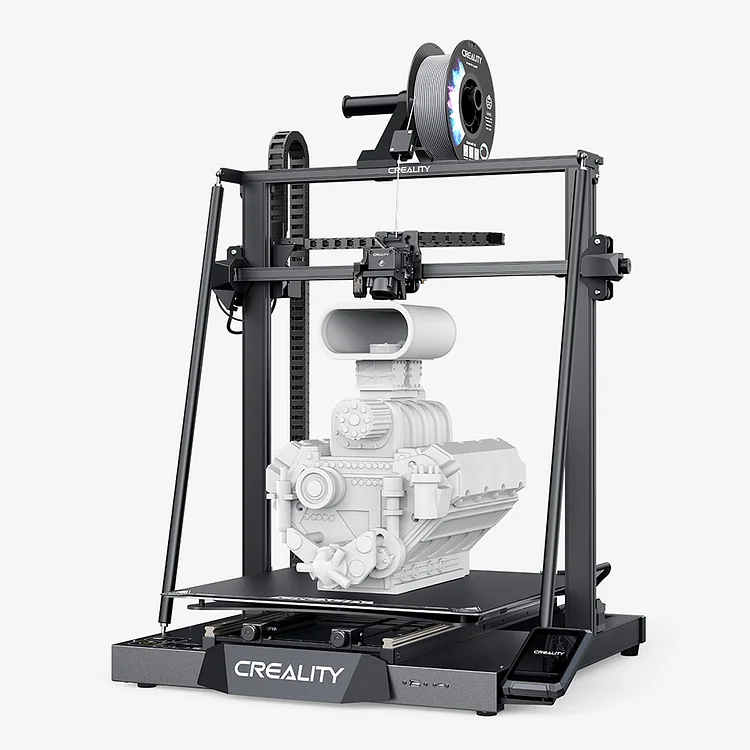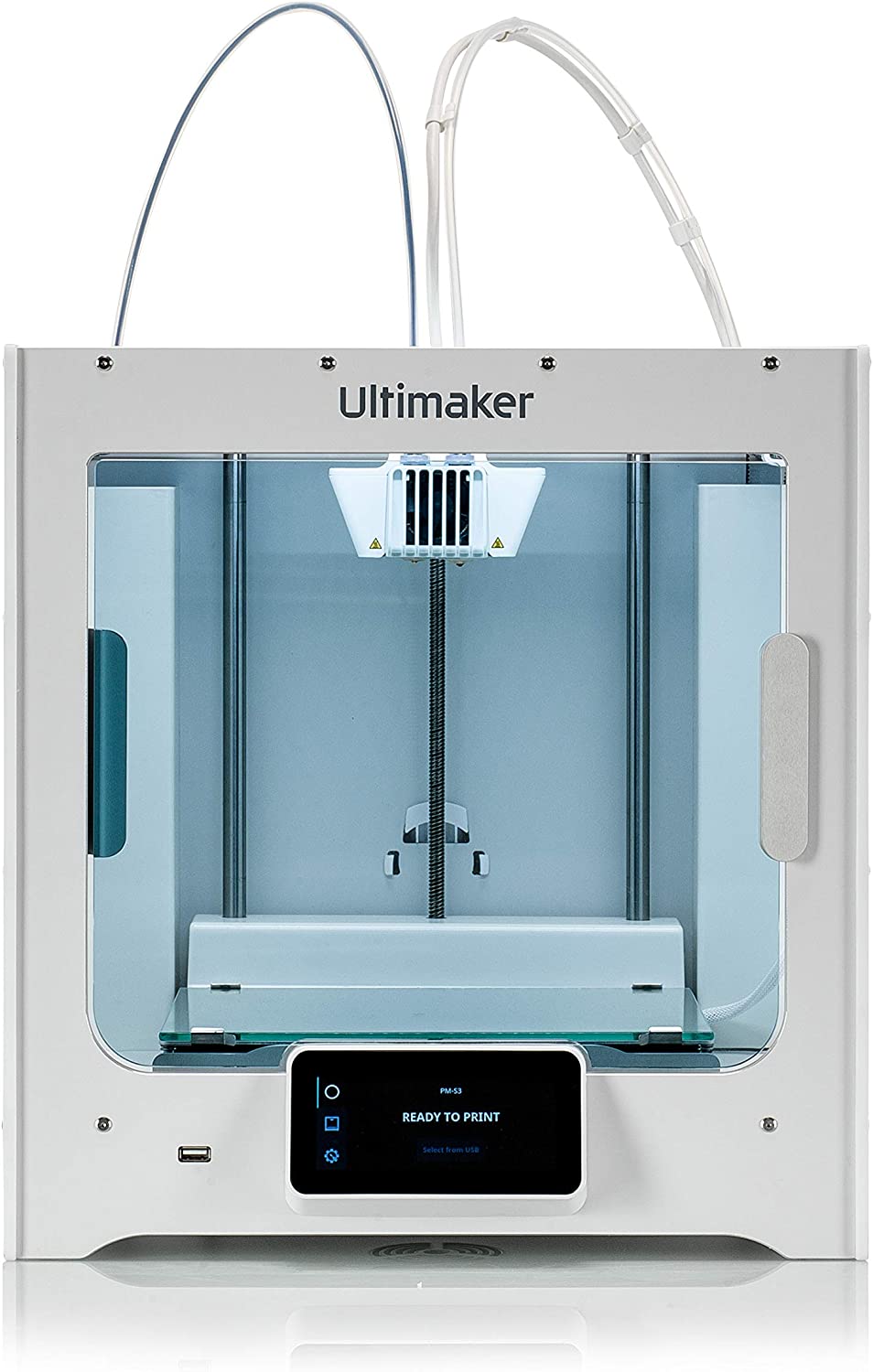Compare CR M4 vs S5
Comparison between the best 3D printers
Choose the best 3D printer at the best price. The cheapest 3D printers are here.
Buy a 3D printer here with 3D Fila.
 |
 |
|
| Model | CR M4 |
S5 |
| Printing Material | Filament | Filament |
| Buy Filament for Creality 3D CR M4 | Buy Filament forUltimaker S5 | |
| Estimated price | $1099,00 | $6950,00 |
| Manufacturer | Creality 3D | Ultimaker |
| Release Year | 2023 | 2021 |
| Print Volume [mm] | 450x450x470 | 330x340x300 |
| Printer Size [mm] | 655x700x865 | 495x585x780 |
| Weight [kg] | 23 | 20,6 |
| Power Loss Recovery | YES | YES |
| Enclosed printer | NO | YES |
| Bed Leveling | Automatic | Automatic |
| Filament End Sensor | YES | YES |
| Bed type | Heated | Heated |
| Power supply system | Direct Drive | Bowden |
| Standard nozzle | 0,4 | 0,4 |
| Maximum Nozzle Temperature [°C] | 300 | 280 |
| Maximum Bed Temperature [°C] | 100 | 140 |
| Maximum printing speed [mm/s] | 180 | 80 |
| Filament holder | YES | YES |
| Camera for supervision | NO | NO |
| Recommended filaments | PLA, PETG, TPU, ABS, PLA-Wood, PA, PLA-CF | PLA, ABS, PETG, PC, Nylon, Tritan |
| Recommended slicers | Cura, Simplify, Slic3r, IdeaMaker | Cura |
| Maximum Resolution [mm] | 0,1 | 0,1 |
| Processor | ||
| Display | Display touchscreen 4,3'' | Display touchscreen 4,7'' |
| Power Supply | 110/220V / 800W | 110/220V / 500W |
| Connectivity | SD / USB / Wi-Fi | USB / Wi-Fi |
| Operating systems | Windows, Mac, Linux | Windows, Mac, Linux |
| Date of registration in the system | 2023-02-06 | 2022-11-08 |
| Release date | 2023 | 2021 |
| Extra features | The Creality CR-M4 printer stands out for its easy assembly and automatic table leveling. With dual-gear extruder technology and direct drive, it ensures quality prints. It offers Wi-Fi and LAN connections for easy file sending. Its large construction volume of 450x450x470 mm allows for bold projects. It has linear rails and a high-power Y motor, supporting up to 30 kg on its plate. The innovative design includes an efficient cooling system and a removable screen controller, optimizing usability and comfort during printing. | The Ultimaker S5 stands out for its easy loading and unloading of materials, automatic bed leveling and excellent print quality with resolutions from 60 to 400 microns. It has dual extruders, interchangeable print cores, advanced connectivity with Wi-Fi and LAN, and intuitive software. It includes a Wi-Fi camera for monitoring, a removable glass bed, and a large build volume, making it ideal for professional and creative environments. |
| Support for multiple colors and materials (AMS and CFS) | NO | NO |
Notes * |
||
| Cost-benefit | 6 / 10 | 2 / 10 |
| Hardware | 2.8 / 10 | 3 / 10 |
| Tela | . | . |
| Print volume | 4 / 10 | 4 / 10 |
| Performance | 1 / 10 | 1 / 10 |
Conclusion |
| In comparing the Creality CR M4 and the Ultimaker S5, several key factors emerge that highlight their respective strengths and suitability for different users. The Creality CR M4 offers an impressive cost-benefit ratio, making it an attractive option for budget-conscious hobbyists and small businesses. Its large build volume, direct drive system, and high maximum printing speed provide versatility for a range of projects, while its user-friendly features, such as automatic bed leveling and multiple connectivity options, enhance the printing experience. Additionally, the printer's lightweight design and significant power capacity facilitate more ambitious printing endeavors. On the other hand, the Ultimaker S5, although significantly higher in price, excels in professional applications. It boasts superior print quality, with finer resolution options and a more robust set of features tailored for precision and flexibility in material choices. The addition of dual extruders and advanced connectivity options strengthens its position as a reliable tool for professionals requiring high-quality outputs and efficient workflow management. Its enclosed design and higher maximum bed temperature further enhance its reliability when printing with a wider range of materials. In summary, the Creality CR M4 stands out as a budget-friendly option with substantial capabilities, appealing to newcomers or those working on a variety of projects without the need for the extensive features offered by the Ultimaker S5. Conversely, the Ultimaker S5, with its advanced technical specifications and higher build quality, is better suited for professionals seeking exceptional performance and quality in their 3D printing endeavors. Ultimately, the choice between these two models will largely depend on the user’s specific needs, budget, and desired application. |

